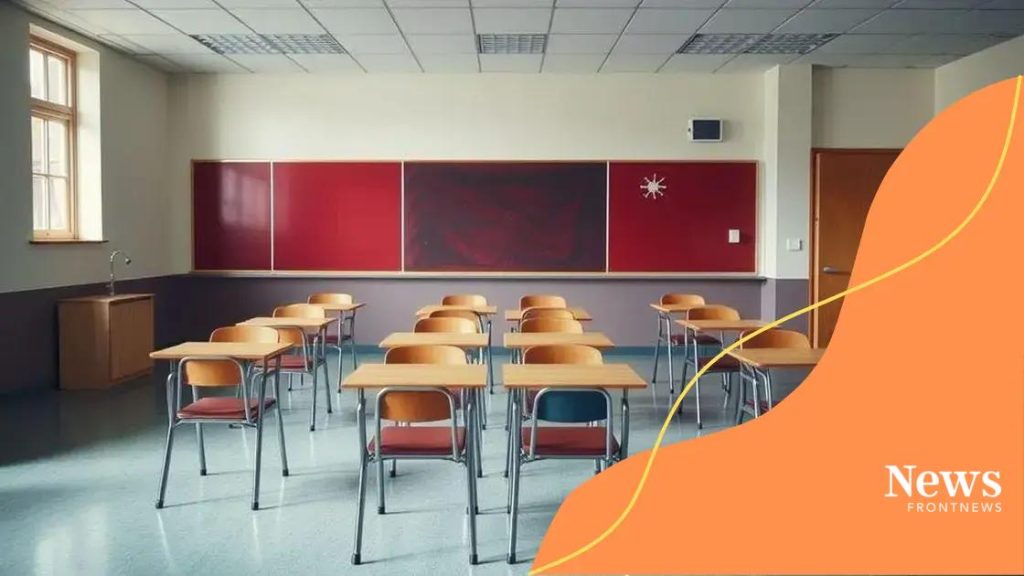School funding crisis: understanding the impact on students

The school funding crisis results in significant disparities in educational resources, negatively impacting student performance and access to quality education due to reliance on local property taxes and inadequate state and federal support.
The school funding crisis is an issue that affects millions of students across the United States. Have you ever wondered how budget cuts impact the quality of education? In this article, we’ll explore the depth of this crisis and what it means for students.
What is the school funding crisis?
The school funding crisis is a severe problem that affects many students and schools across the United States. It refers to the lack of adequate financial resources to meet the needs of students and provide a quality education. Factors such as local property taxes and state budget allocations play a significant role in determining how much money schools receive.
Understanding the Funding System
Schools are funded through a combination of federal, state, and local sources. Unfortunately, this system often leads to unequal distributions of funds. For instance, wealthier districts can raise more money through property taxes, while poorer areas struggle to keep up.
Consequently, schools in low-income neighborhoods may suffer from insufficient resources, overcrowded classrooms, and outdated materials.
Key Consequences of the Crisis
Some major consequences of the school funding crisis include:
- Reduced Programs: Arts, sports, and extracurricular activities often face cuts.
- Teacher Shortages: Schools may have difficulty attracting and retaining qualified educators.
- Lower Student Performance: Adequate funding is directly linked to student success and engagement.
- Widening Inequality: The funding gap exacerbates disparities between affluent and less affluent districts.
The impact of inadequate funding goes beyond classroom resources; it can also influence students’ mental health and overall well-being. When schools cannot provide a nurturing environment, students may feel neglected or unsupported. This emotional burden can hinder their academic performance and future success.
Moreover, the school funding crisis raises questions about equity and the responsibility of governments to ensure all students have access to quality education. Advocates for reform argue that investments in education are crucial for breaking the cycle of poverty and empowering future generations.
Community Response
Communities often band together to address these challenges. Parents, teachers, and local organizations advocate for increased funding, pushing for legislative changes and seeking partnerships with businesses. Understanding the dynamics of the school funding crisis is essential for making informed decisions that benefit all students.
Historical context of education funding in the U.S.
The historical context of education funding in the U.S. reveals a complex system shaped by policies, societal values, and economic factors. It is crucial to understand how we arrived at the current state of funding disparities across schools.
Early Developments in Education Funding
In the 19th century, public education began to gain traction, but funding was primarily local, reliant on property taxes. This system created uneven access to quality education, as wealthier areas could fund better schools.
As the country industrialized, the need for educated citizens increased, prompting some states to reform their funding structures. During this time, legislative efforts aimed to standardize education became more pronounced.
Key Legislation and Policies
Over the decades, several critical laws shaped educational funding:
- The Elementary and Secondary Education Act (ESEA): Passed in 1965, it aimed to close the funding gap between wealthy and poor districts.
- Title I Funding: Designed to assist schools with high percentages of low-income students, providing additional resources.
- The Individuals with Disabilities Education Act (IDEA): Enacted in 1975, it secured funding for special education services, ensuring access for all students.
Despite these efforts, challenges persist. The reliance on local property taxes for funding creates significant disparities. The uneven distribution further intensifies issues related to race and economic status. Schools in affluent neighborhoods often receive much more financial support compared to those in lower-income areas.
In recent years, the historical context of education funding has become a focal point for reformers. They argue that the funding system perpetuates inequality and hampers efforts to provide a quality education for every child. Community advocacy and policy changes are increasingly aimed at creating more equitable funding solutions for all schools.
Key factors contributing to funding disparities

Several key factors contributing to funding disparities in education create a significant gap between wealthy and underfunded schools. Understanding these elements helps clarify why some schools struggle to provide the same quality of education as others.
Local Property Taxes
A primary factor is the reliance on local property taxes for school funding. Wealthier communities can generate much more revenue because property values are higher. This results in better resources, facilities, and teacher salaries compared to schools in lower-income areas.
State Funding Formulas
State funding formulas also play a crucial role. States often allocate funds based on complex formulas that may not adequately account for the needs of economically disadvantaged students. Limited state budgets can lead to cuts in education funding during tough economic times, impacting those communities the most.
Economic Inequality
Economic inequality affects school funding as well. Schools in affluent neighborhoods often receive donations and support from local businesses and organizations, while schools in poorer areas may not have the same financial backing. This disparity further widens the gap in educational resources.
Enrollment Trends
Changes in enrollment can also impact funding levels. As families move to areas with better-funded schools, districts with declining enrollment face reduced funding, making it harder to provide quality education. This cycle can lead to fewer programs and larger class sizes in struggling districts.
Another factor is community advocacy. In some areas, strong advocacy groups push for better funding and resources, while in others, a lack of organization can leave schools without a voice. These differences lead to varied success in securing additional support from governments and private donors.
The key factors contributing to funding disparities illustrate the urgent need for comprehensive reforms. Addressing these issues is essential to leveling the playing field and ensuring that every student has access to a quality education.
Effects of inadequate funding on student performance
The effects of inadequate funding on student performance are profound and far-reaching. When schools lack sufficient resources, students often face numerous challenges that can hinder their educational growth.
Class Size and Teacher Ratios
One major issue is larger class sizes. Schools with limited funding may not be able to hire enough teachers, resulting in overcrowded classrooms. This situation makes it difficult for teachers to give individual attention to students, impacting their learning outcomes significantly.
Access to Resources
Inadequate funding can lead to a shortage of essential educational materials, such as books, technology, and lab equipment. Without these resources, students may miss out on hands-on learning experiences that are crucial for developing skills in areas like science and technology.
Extracurricular Activities
The lack of funding also affects extracurricular activities. Sports, arts programs, and clubs often suffer cuts, limiting students’ opportunities to explore their interests and develop critical social skills. These activities are important for a well-rounded education.
Additionally, inadequate funding can lead to a lack of support services. Schools may struggle to provide counseling, tutoring, or special education services. This lack of support can be detrimental to students who require additional help to succeed in their studies.
Furthermore, students from low-income families often bear the brunt of these funding issues. When schools in their neighborhoods cannot provide quality education, these students may face barriers that affect their college readiness and future career opportunities. The cycle of disadvantage becomes harder to break.
Research consistently shows that schools with more funding see better academic performance. Therefore, addressing funding inequalities is vital for improving student success rates across the board. By ensuring adequate resources, we can help all students thrive and reach their full potential.
Possible solutions for improving school funding
Exploring possible solutions for improving school funding is essential for creating an equitable education system. Many strategies exist to address the funding disparities schools face, and some have shown promising results.
Revising Funding Formulas
One of the most effective ways to improve funding is to revise state funding formulas. States can create more equitable systems that account for the specific needs of low-income districts. This approach may include adjusting formulas to allocate funds based on student needs rather than just property taxes.
Increasing State and Federal Investment
Another solution involves increasing investments at the state and federal levels. This funding can help support struggling districts and ensure that all students have access to essential resources. Federal programs like Title I funding can be expanded to provide more support for low-income schools.
Community Involvement and Advocacy
Community involvement plays a crucial role in improving school funding. Parents, teachers, and local organizations can unite to advocate for better funding and resources. Grassroots campaigns often raise awareness about the needs of underfunded schools and can lead to positive changes.
Additionally, partnerships with local businesses can also provide schools with the resources they need. For example, companies may donate supplies, provide funding, or even mentor students. These partnerships not only enhance school resources but also connect students with potential career opportunities.
Innovative Funding Models
Exploring innovative funding models can also help. Some states have implemented programs that allow for additional funding through philanthropic efforts or community tax initiatives. These programs encourage local communities to invest in their schools and create a more sustainable funding source.
By focusing on these possible solutions for improving school funding, we can create a brighter future for all students. It is crucial to prioritize educational equity and ensure that every child has the opportunity to succeed.
FAQ – Frequently Asked Questions about School Funding Crisis
What is the school funding crisis?
The school funding crisis refers to the significant disparities in financial resources allocated to schools, often affecting the quality of education students receive.
How does inadequate funding impact students?
Inadequate funding can lead to larger class sizes, fewer resources, and lack of support services, negatively affecting student performance and engagement.
What can be done to improve school funding?
Possible solutions include revising funding formulas, increasing state and federal investment, and fostering community involvement to advocate for changes.
How does community involvement affect school funding?
Community involvement plays a crucial role by raising awareness about funding issues and advocating for resources that can improve educational opportunities for all students.





